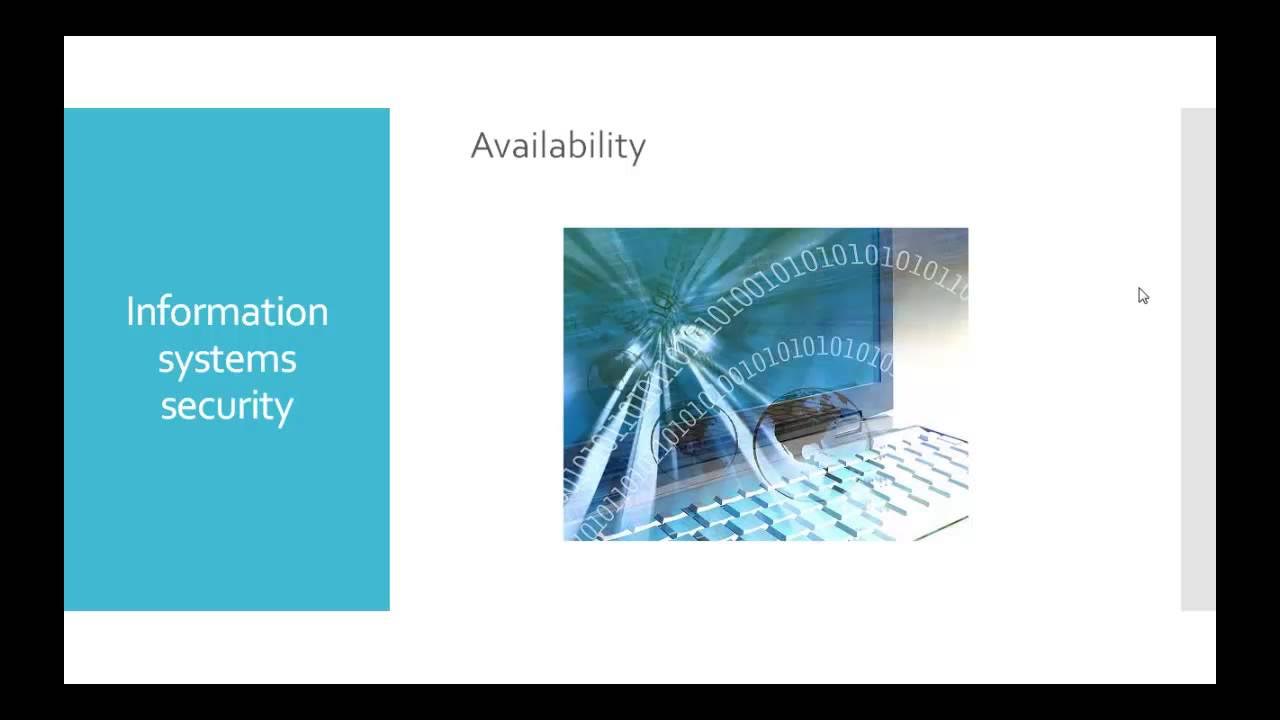Explain Access Control Types| Administrative, Logical, Physical| Preventive, Detective, Compensating
Summary
TLDRIn this video, the concept of access control is explored, emphasizing its importance in safeguarding resources, systems, and information. The video covers various types of access control, including administrative, technical, and physical controls, and explains their roles in securing access based on how they are implemented and what they aim to achieve. It also delves into categories like preventative, detective, corrective, and compensating access controls, outlining measures for preventing unauthorized access, detecting breaches, correcting issues, and recovering from incidents. The video provides a comprehensive understanding of access control principles and practices.
Takeaways
- 😀 Access Control is the process of regulating and managing access to resources, systems, or physical spaces to protect sensitive information and ensure confidentiality, integrity, and availability.
- 😀 Access Control is crucial for authenticating users, authorizing access based on roles and permissions, and maintaining accountability through logging and monitoring.
- 😀 Administrative Access Control involves policies, procedures, and measures such as password policies, user account management, security awareness training, and auditing to control access.
- 😀 Technical or Logical Access Control uses technological solutions like authentication mechanisms, ACLs, encryption, firewalls, and intrusion detection/prevention systems to secure resources.
- 😀 Physical Access Control focuses on managing physical access to facilities using barriers like locks, access cards, biometric systems, surveillance cameras, and security guards.
- 😀 Preventative Access Control proactively aims to prevent unauthorized access through measures like perimeter security, security signs, video surveillance, firewalls, and security awareness programs.
- 😀 Detective Access Control involves detecting unauthorized access after it occurs, using security logs, intrusion detection systems, surveillance cameras, and user behavior analysis tools.
- 😀 Corrective Access Control takes action after an incident, including access revocation, system patches, forensic analysis, and restoring systems to a secure state.
- 😀 Deterrent Access Control discourages unauthorized access attempts by creating a perception of risk, such as security guards, warning signs, and surveillance cameras.
- 😀 Recovery Access Control focuses on restoring normal operations after a breach, with measures like incident response plans, system restoration, patch management, and system hardening.
- 😀 Compensating Access Control addresses gaps in primary access controls through supplementary measures, such as multi-factor authentication, encryption, VPNs, and third-party security audits.
Q & A
What is Access Control?
-Access Control refers to the process of regulating and managing access to resources, systems, or physical spaces to ensure that only authorized users can access them. It aims to protect sensitive information, provide confidentiality, maintain data integrity, and ensure availability for authorized users.
Why is Access Control necessary?
-Access Control is necessary to protect sensitive information, ensure confidentiality, maintain data integrity, prevent unauthorized access, and ensure the availability of resources to authorized users.
What are the primary goals of Access Control?
-The primary goals of Access Control are to authenticate users, authorize access based on roles and permissions, and maintain accountability through logging and monitoring.
What are the three main types of Access Control based on implementation?
-The three main types of Access Control based on implementation are Administrative Access Control, Technical (or Logical) Access Control, and Physical Access Control.
What is Administrative Access Control?
-Administrative Access Control involves policies, procedures, and measures implemented by administrators to manage access to resources and systems. Examples include access control policies, password policies, user account management, and security awareness training.
What is Technical (or Logical) Access Control?
-Technical Access Control uses technology-based measures such as authentication mechanisms, access control lists (ACLs), encryption, firewalls, intrusion detection systems (IDS), VPNs, and Security Information and Event Management (SIEM) systems to regulate and manage access to resources.
What is Physical Access Control?
-Physical Access Control refers to measures that manage physical access to buildings or areas within an organization. Examples include physical barriers, access cards, biometric systems, locks, security guards, surveillance systems, and visitor management systems.
What is Preventive Access Control?
-Preventive Access Control refers to measures implemented to proactively reduce the likelihood of unauthorized access or security breaches. Examples include perimeter security, video surveillance, firewalls, security policies, and employee security awareness training.
What is Detective Access Control?
-Detective Access Control focuses on identifying and detecting unauthorized access or security breaches after they have occurred. Examples include security logging, intrusion detection systems (IDS), security audits, and user behavior analysis.
What is Corrective Access Control?
-Corrective Access Control involves actions taken after a security breach to mitigate its impact, restore security, and prevent future incidents. Examples include incident response, access revocation, system patches, security awareness training, and system restoration using backups.
What is Directive Access Control?
-Directive Access Control refers to measures that direct or encourage compliance with security policies. Examples include escape route signs, notifications, and security policy requirements aimed at controlling user actions.
What is Compensating Access Control?
-Compensating Access Control refers to supplementary measures implemented to address vulnerabilities or deficiencies in primary access control mechanisms. Examples include multi-factor authentication (MFA), virtual private networks (VPNs), encryption, network segmentation, and third-party security audits.
How do Compensating Access Controls help improve security?
-Compensating Access Controls help improve security by providing additional layers of protection or addressing gaps in primary access controls. For example, multi-factor authentication (MFA) adds an extra layer of security when passwords alone may not be sufficient.
Outlines

This section is available to paid users only. Please upgrade to access this part.
Upgrade NowMindmap

This section is available to paid users only. Please upgrade to access this part.
Upgrade NowKeywords

This section is available to paid users only. Please upgrade to access this part.
Upgrade NowHighlights

This section is available to paid users only. Please upgrade to access this part.
Upgrade NowTranscripts

This section is available to paid users only. Please upgrade to access this part.
Upgrade Now5.0 / 5 (0 votes)





